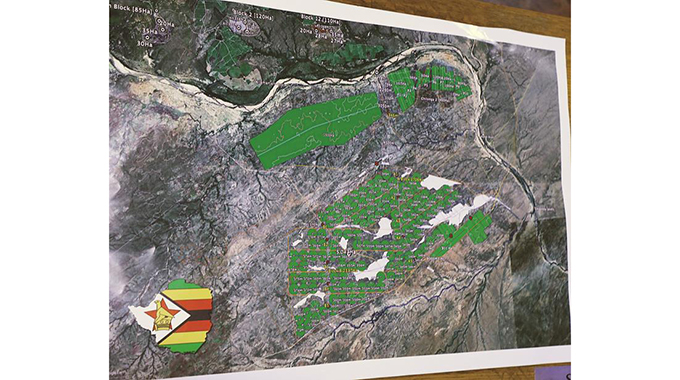
Fungi Kwaramba-Political Editor
THE Government has come up with a national master plan which will transform hitherto marginalised communities into areas of growth with capacity to economically contribute to the national Gross Domestic Product (GDP).
To start the ball rolling — President Mnangagwa on Sunday dispatched his deputy, Vice President Constantino Chiwenga to Chiredzi, one of such areas that has been marked for transformation in the shortest possible time.
Other areas that will be transformed under the masterplan include Kanyemba in Mashonaland Central, Gwai-Shangani and Binga in Matabeleland North, Beitbridge in Matabeleland South and Pfungwe and Kotwa in Mashonaland East among other places.
The masterplan is in line with President Mnangagwa’s pledge to “ensuring equal development which leaves no one behind” in development and all national programmes.
Deputy Chief Secretary to the President and Cabinet Mr George Charamba said the thrust of the President is to empower communities that have for long been left behind while tapping into their time-honed skills to contribute to economic growth and mordenisation.
“His Excellency the President, dispatched his deputy Vice President Chiwenga to Chiredzi to wrap up consultations with traditional leaders, community leaders, local leaders and MPs and other Government officials in respect of the masterplan which is meant for Chiredzi. This plan speaks to a broader national plan which Government has drawn up to bring to speed all areas in the country which were colonial backwaters but which actually have unique endowments”, said Mr Charamba.
Chiredzi, in particular, has advanced infrastructure that also includes large water sources such as Bhangala and Tugwi-Mukosi and it is for that reason that it became the first port of call for Government to start in earnest the transformation process in line with President Mnangagwa’s Vision 2030, to transform the country into an upper-middle-class by 2030.
It is envisaged that this winter, there will be a winter crop while other crops such as maize and cotton will also follow. Until now, Chiredzi has been known for sugar cane production albeit with the major beneficiaries being larger companies.
However, under the programme, that is already being implemented, disadvantaged communal farmers will be turned into communal/commercial farmers who will farm all year round instead of coaxing a living from seasonal cropping relying on rain-fed agriculture.
Chiredzi, which also encompasses the much talked about but misunderstood Chilonga communal areas will see irrigation of more than 20 000 hectares of land and only 6000ha will be under Lucerne grass cultivation to support livestock production.
Under this programme only a few people will be moved in the transformation of Chilonga and in all this Government will compensate and construct houses for the affected families — which will be settled nearby to tap into the facilities that will be availed.
Historically, multilaterals have elbowed indigenous people from their fertile lands and now the Second Republic seeks to empower instead of disempowering and to modernise and mechanise.
“The view of the State is not looking at this as the continuation of the colonial land use plan, the hallmark of the colonial land use plan was displacement, this time around, and this is the message of the President; we are replacing displacement with development, disempowerment with empowerment of the locals.
“Clearly we are no longer talking about little, divisive visions by small men and women seeking relevance in opposition. We are talking about transforming colonially ordained backwaters into major national growth points for agro-industrial transformation, much of it export-focused and led,” said Mr Charamba.
Under the National Development masterplan other areas that will be covered include Kanyemba in Mashonaland Central, Gwai-Shangani in Matabeleland North which will be subsequently developed along with the Bulawayo kraal, there is also Binga. In Matebelaland, Beitbridge will also be uplifted through citrus plantations.
In Manicaland Province, the hitherto underdeveloped areas such as Nyashanhu and Birchenough will also witness transformation and already the Marovanyati Dam has been completed providing irrigation waters for the communities.
The area connecting Pfungwe and Kotwa in Mashonaland East Province is also covered in the national development masterplan.
Since 2018, the Second Republic has completed 185 infrastructure development projects, such as dams, with work in progress on another 186.
The Gwayi-Shangani Dam project will be completed in December this year with the 245km pipeline that connects the dam to Bulawayo set to be completed in 2022, as President Mnangagwa’s Government pushes to fulfil the century-old dream to permanently solve Matabeleland region’s water problems through the National Matabeleland Zambezi Water Project (NMZWP).
Meanwhile, Kanyemba on the Zambezi, which is situated where Zimbabwe, Zambia and Mozambique meet, is one of the most undeveloped areas in the country but now is going through rapid transformation in fulfilment of the President’s vision to leave no one behind.
